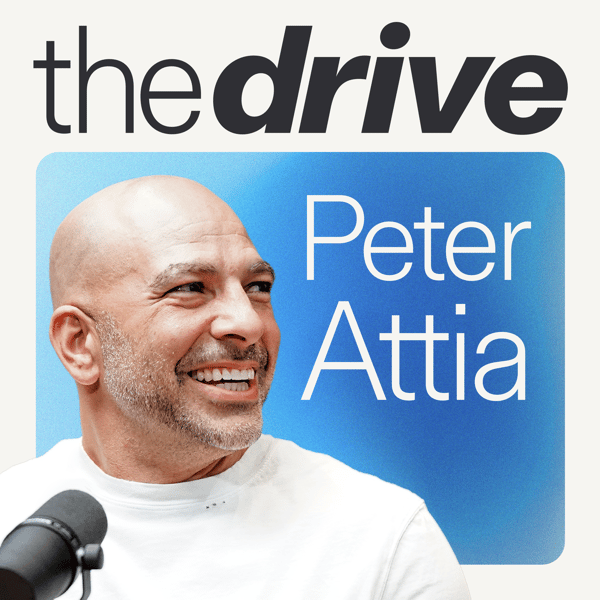#131 - Beth Lewis: The Art of Stability: Learning about pain, mitigating injury, and moving better through life
The Peter Attia Drive
Peter Attia, MD
4.7 • 7.3K Ratings
🗓️ 5 October 2020
⏱️ 111 minutes
🧾️ Download transcript
Summary
Beth Lewis is a former professional dancer and a self-described “educator of movement” who has an unmatched ability to assimilate information and customize training plans from multiple training systems. In this episode, Beth takes us through how she identifies problematic movement patterns and postures to help individuals relieve pain, avoid injury, and move better within all types of exercise. She explains how movement is in fact a trainable skill and provides suggestions for what people can add to their exercise routine to benefit their health and longevity.
We discuss:
- Beth’s “way of no way” training philosophy [4:45]
- Beth’s background in dancing and how she ended up in New York City [7:30]
- Beth’s transition to fitness coaching and how her training philosophy has evolved [12:45];
- Functional Range Conditioning and scapular mobility [21:50];
- An overview of Postural Restoration Institute and Peter’s squat assessment [35:30];
- The important connection between the ribs and breathing [39:45];
- The role of sitting and external stress in chronic muscular tension [42:30];
- The important role of your toes, minimalist footwear, and toe yoga [44:30];
- Dynamic Neuromuscular Stabilization (DNS) [48:30];
- A different view on knee valgus [52:45];
- Is there such a thing as “bad posture”? [56:30];
- How Beth identifies an issue, addresses it, and keeps clients motivated [58:45];
- Lifting weights, the Centenarian Olympics, and dancing into old age [1:11:00];
- The importance of the hamstrings versus abs [1:21:15];
- Benefits of rowing, and why everyone should add it to their exercise regimen [1:27:15]
- Different roles of concentric versus eccentric strength [1:35:15];
- Flexibility and high-intensity interval training (HIIT) [1:39:40];
- Training versus playing sports, and the best type of activity for kids [1:43:00]; and
- More.
Transcript
Click on a timestamp to play from that location
| 0:00.0 | Hey everyone, welcome to the Drive Podcast. |
| 0:13.0 | I'm your host, Peter Atia. |
| 0:14.8 | This podcast, my website, and my weekly newsletter, all focus on the goal of translating |
| 0:18.7 | the science of longevity into something accessible for everyone. |
| 0:22.4 | Our goal is to provide the best content in health and wellness, full stop, and we've |
| 0:26.6 | assembled a great team of analysts to make this happen. |
| 0:29.4 | If you enjoy this podcast, we've created a membership program that brings you far more |
| 0:33.2 | in-depth content if you want to take your knowledge of the space to the next level. |
| 0:37.3 | At the end of this episode, I'll explain what those benefits are, or if you want to learn |
| 0:41.0 | more now, head over to peteratiamd.com forward slash subscribe. |
| 0:46.3 | Now without further delay, here's today's episode. |
| 0:51.0 | My guest this week is Beth Lewis. |
| 0:53.2 | Before I get into who Beth is and what we talk about in this episode, I want to take a |
| 0:57.1 | moment to explain something, which is probably more than any episode we've done recently, |
| 1:02.8 | and potentially for the duration of this podcast, this is a subject matter that I felt absolutely |
| 1:09.1 | needed to be covered in video. |
| 1:11.6 | The reason for that is the concepts that we discuss, which pertain to body movement, |
| 1:17.4 | are very difficult to understand if you don't have the lingo down pad. |
| 1:22.0 | When Beth talks about the difference between scapular protraction and retraction, yeah, |
| 1:27.6 | if you know what those mean and you can follow along listening, that's great, but I suspect |
| 1:31.4 | many people can't, and it's much easier to understand what's going on if you can actually |
| 1:36.3 | see what those things look like, which is actually easy to do in the middle of a discussion. |
... |
Please login to see the full transcript.
Disclaimer: The podcast and artwork embedded on this page are from Peter Attia, MD, and are the property of its owner and not affiliated with or endorsed by Tapesearch.
Generated transcripts are the property of Peter Attia, MD and are distributed freely under the Fair Use doctrine. Transcripts generated by Tapesearch are not guaranteed to be accurate.
Copyright © Tapesearch 2025.

